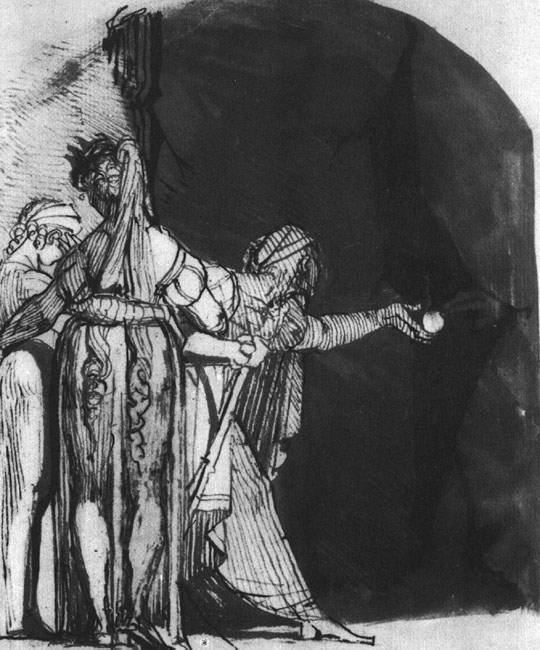 | ||
In Greek mythology the Graeae (/ˈɡraɪi/; English translation: "old women", "grey ones", or "grey witches"; alternatively spelled Graiai (Γραῖαι) and Graiae), also called the Grey Sisters, and the Phorcides ("daughters of Phorcys"), were three sisters who shared one eye and one tooth among them. Their names were Deino (or Dino), Enyo, and Pemphredo (or Pephredo).
Contents
Etymology
The word Graeae is probably derived from the adjective γραῖα graia "old woman", derived from the PIE root *ǵerh2-/*ǵreh2-, "to grow old" via Proto-Greek *gera-/grau-iu.
Mythology
The Graeae were daughters of the sea-deities Phorcys and Ceto, (from which their name the Phorcydes derived), and sisters to the Gorgons. The Graeae took the form of old, grey-haired women. Their age was so great that a human childhood for them was hardly conceivable. In Theogony, however, Hesiod ironically describes the Graeae as being "fair-cheeked." In Prometheus Bound, the Graeae are described as being half-swan.
Hesiod names only two Graeae, the "well-clad" Pemphredo (Πεμφρηδώ "alarm") and the "saffron-robed" Enyo (Ἐνυώ "horror" the "waster of cities" who also had an identity separate from this sisterhood). Pseudo-Apollodorus lists Deino (Δεινώ "dread", the dreadful anticipation of horror) as a third. Calling them "Phorcides," Hyginus, in addition to Pemphredo and Enyo, adds Persis noting that "for this last others say Dino".
They shared one eye and one tooth, which they took turns using. By stealing their eye while they were passing it amongst themselves, the hero Perseus forced them to tell the whereabouts of the three objects needed to kill Medusa (in other versions the whereabouts of Medusa herself), by ransoming their shared eye for the information.
The Graeae are similar to the Greek Moirai, the northern European Norns, the Roman Parcae, the Slavic Sudice, the Celtic Morrigan, and the Baltic goddess Laima and her two sisters. The Three Witches from the play MacBeth by William Shakespeare are also quite similar to the three Graeae. Nonetheless, all of these different groups of triple goddesses are distinct entities.
